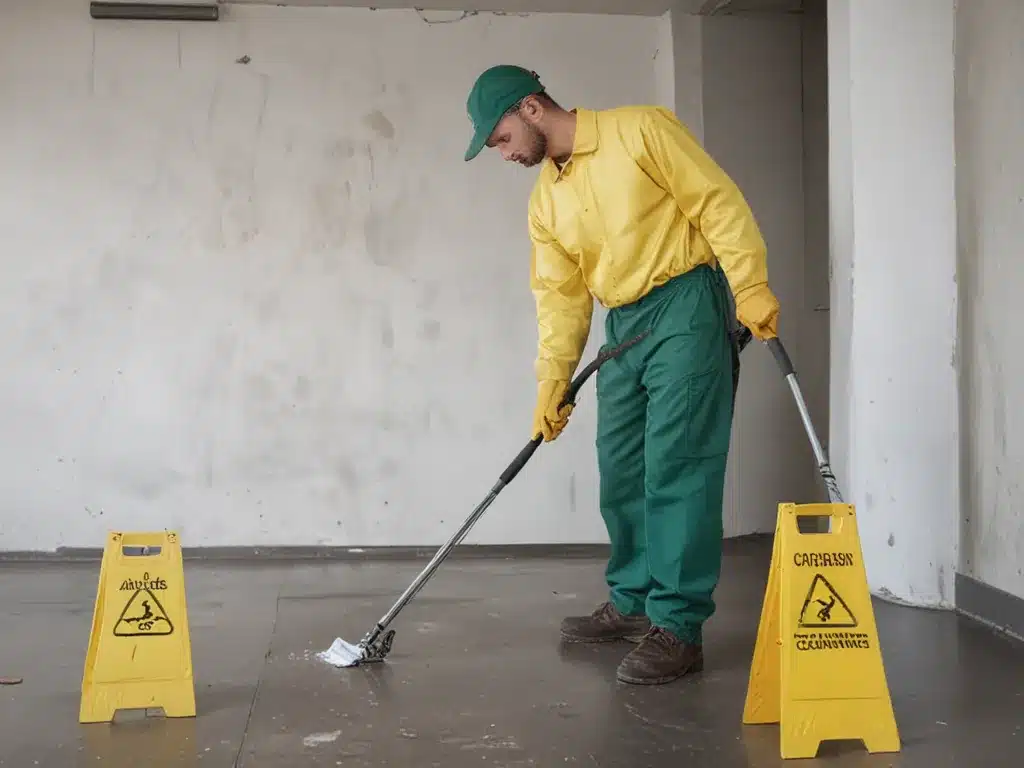Introduction
Cleaning jobs involving hazardous materials require workers to take proper safety precautions to avoid illness, injury, or even death. As a professional cleaner, it is my responsibility to understand the risks and to follow safety protocols. In this article, I will provide an in-depth look at safety measures for hazardous cleaning jobs.
Assessing the Risks
Before starting any hazardous cleaning job, I need to fully assess the potential risks. This involves:
-
Identifying the hazardous materials involved – are they corrosive, flammable, explosive, toxic, reactive, or biologically harmful?
-
Researching the properties and dangers of each hazardous material. Consulting Safety Data Sheets and other resources on safe handling.
-
Determining the risks for acute and chronic health effects. Exposure to hazardous materials can cause immediate injury or long-term illnesses like cancer.
-
Considering the ways exposure could occur – inhalation, skin/eye contact, ingestion, or injection. Some materials are more readily absorbed than others.
-
Recognizing additional risk factors like poorly ventilated spaces, amount of hazardous material, and duration of exposure.
Thorough risk assessment enables me to select appropriate safety measures. It is crucial I understand the level of danger before performing cleaning tasks.
Safe Work Practices
Once risks are assessed, I adopt safety work practices to control exposures. Key measures include:
Personal Protective Equipment (PPE)
- Respirator – necessary for protection from hazardous vapors, gases, dusts, and oxygen-deficient atmospheres. I ensure proper fit and appropriate cartridge filters.
- Chemical goggles/face shield – provide eye and face protection from splashes.
- Chemical-resistant gloves – prevent absorption through skin. I check gloves for defects before use.
- Coveralls, aprons – protect body from contaminants. Made of materials like Tyvek.
- Rubber boots – prevent absorption through feet. Should be unlined.
Work Area Precautions
- Ventilation – I use local exhaust ventilation to capture/remove hazardous vapors. General ventilation also helps remove contaminants.
- Warning signs/barriers – to alert unprotected persons to stay away from hazardous area.
- Decontamination – upon completing the task, I decontaminate myself, all equipment, and the work area.
Safe Work Practices
- Never eat, drink, or smoke in contaminated areas.
- ** Avoid** skin contact by sealing potential absorption routes.
- Limit time of exposure to hazardous chemicals. Take breaks in fresh air.
- Eliminate ignition sources when flammable materials are present.
- Wash hands thoroughly after removing gloves and PPE.
- Inspect PPE regularly for defects, change filters when resistance increases.
- Follow safety protocols like hazardous waste disposal.
Emergency Response Preparedness
Despite best efforts, hazardous material emergencies can still occur. I prepare response plans for different exposure scenarios:
Inhalation
- Recognize signs of respiratory exposure like coughing, wheezing, shortness of breath.
- Evacuate person from contaminated area immediately.
- Administer CPR/medical aid if needed.
- Call emergency contacts per facility’s emergency response plan.
Skin Contact
- Rinse affected area with water for 15+ minutes.
- Remove contaminated clothing and seal in bag.
- Wash with soap and water, get medical attention for rash/irritation.
Eye Contact
- Flush eyes with water for 15+ minutes while holding eyelids open.
- Remove contact lenses if present before flushing.
- Get medical assistance to assess eye damage.
Ingestion
- Consult Safety Data Sheet for first aid instructions specific to chemical.
- Call poison control center or doctor immediately.
- DO NOT induce vomiting unless instructed to do so.
My emergency preparedness enables me to respond quickly if an accident occurs. Having safety protocols and PPE helps prevent these scenarios.
Conclusion
Cleaning jobs involving hazardous materials require extensive safety measures. I thoroughly assess the risks before work begins, then use PPE, safe work practices, and emergency response plans to ensure my safety. While hazardous cleaning poses dangers, being informed and taking proper precautions allows me to perform these vital jobs safely. My diligent use of safety protocols protects my own health while delivering clean, hazard-free environments.







